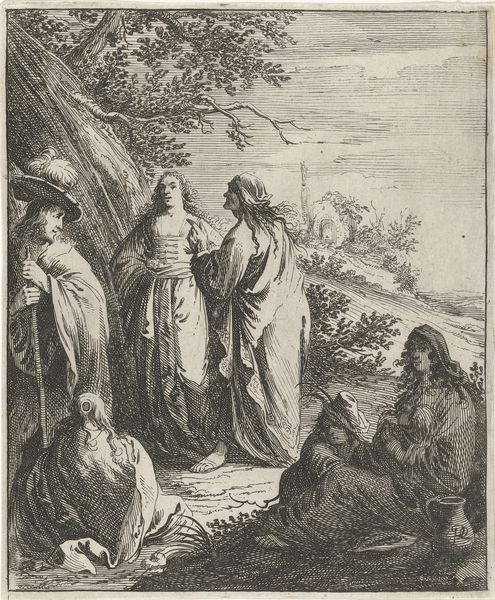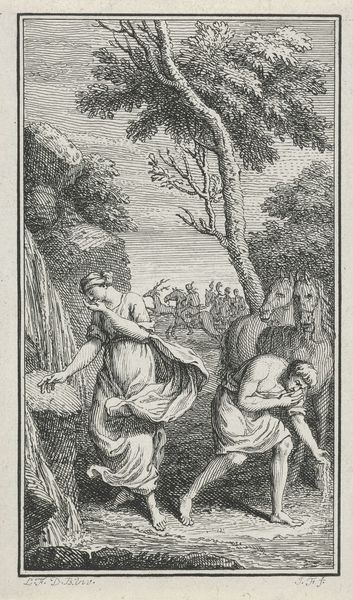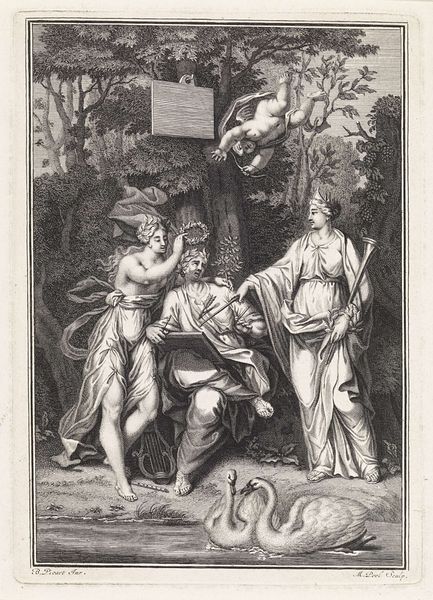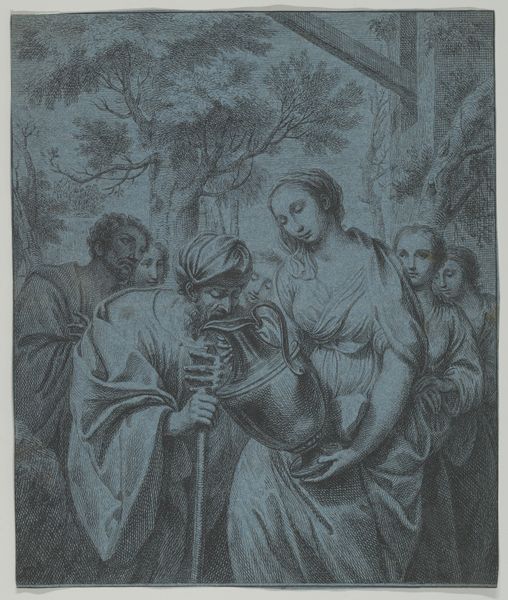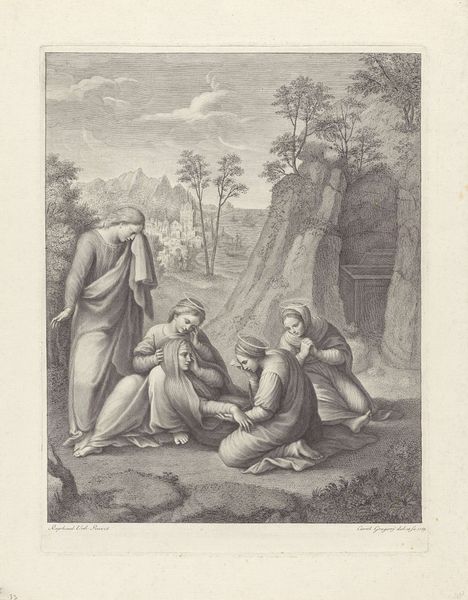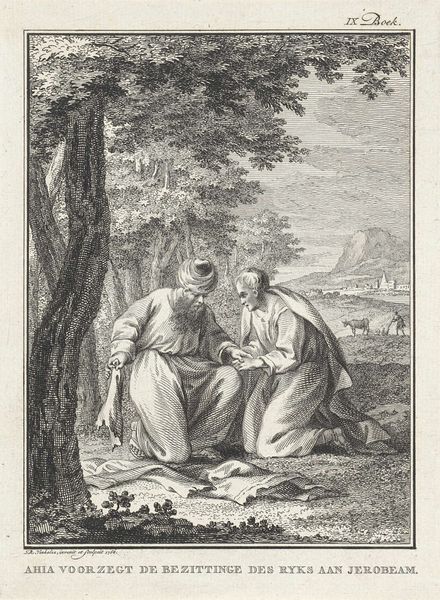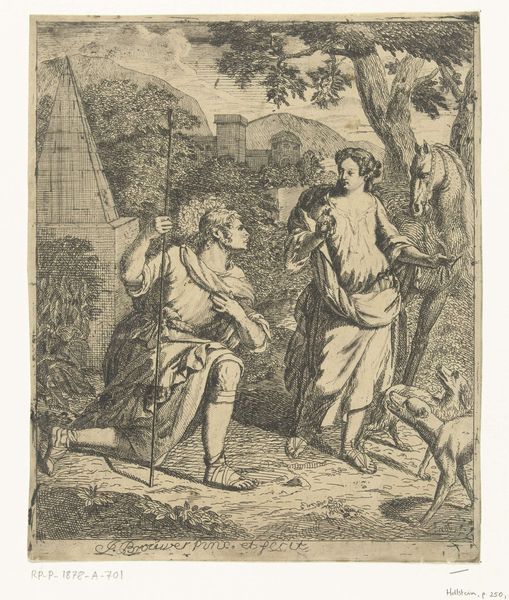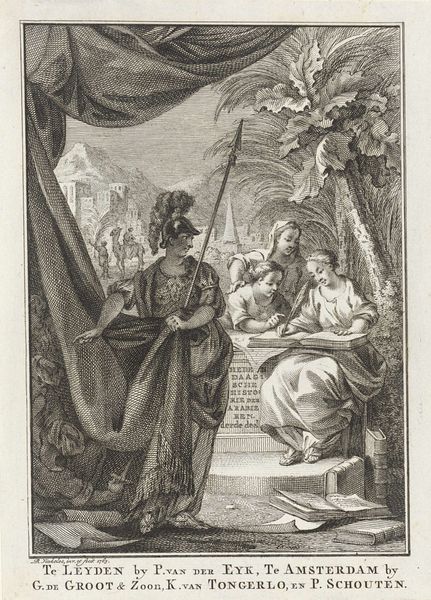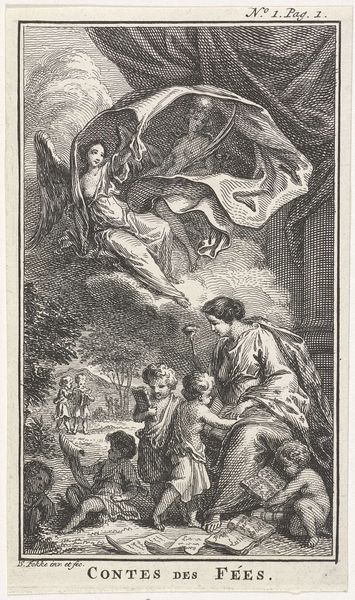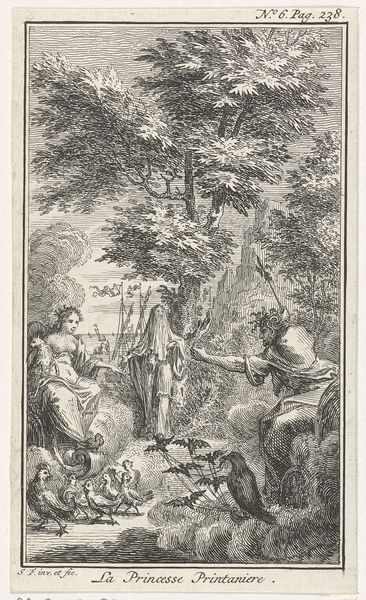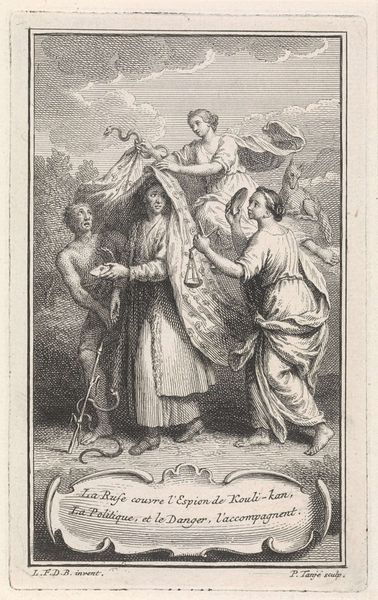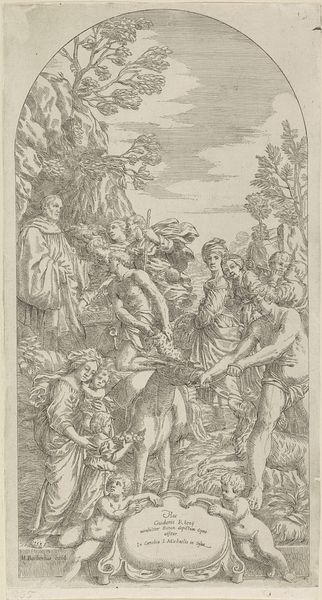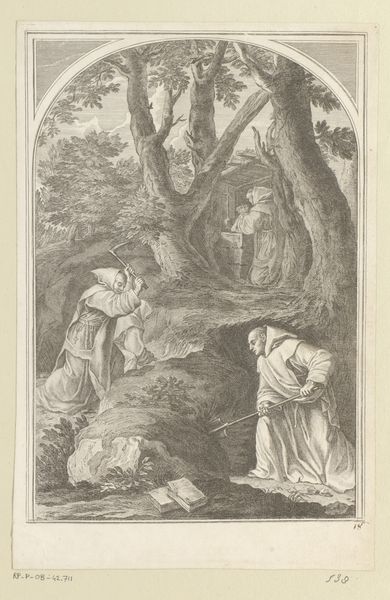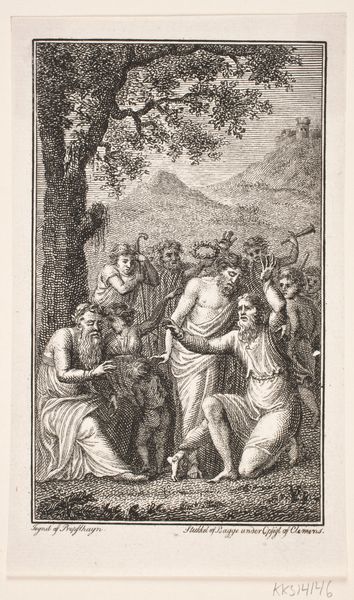
print, engraving
#
baroque
# print
#
landscape
#
figuration
#
history-painting
#
engraving
Dimensions: height 116 mm, width 70 mm
Copyright: Rijks Museum: Open Domain
Curator: Let’s turn our attention to "Drie vrouwen en een draak," or "Three Women and a Dragon," an engraving now held at the Rijksmuseum. It was created sometime between 1703 and 1767 by Jacob Folkema. What’s your first take? Editor: Okay, mood: mysterious. Is that a full moon, or just impending doom? And the dragon looks almost…domesticated? Like an oversized, grumpy, scaley lapdog. The landscape is rendered with so much intricate detail; it is a whole strange, unsettling world. Curator: Yes, precisely! The detail in the engraving, especially the foliage, gives a real sense of place. I see this as a reflection of Baroque sensibilities, when art increasingly served ideological purposes. Prints were particularly suited to spread such allegories. It blends a classical style with an interest in portraying figures engaging with moral narratives. Editor: Allegory, got it. The expressions of the women, that open gesture…are they warding off the dragon, maybe trying to reason with it? It makes me wonder if this scene feels ripped from a half-remembered fairytale, or maybe a cautionary bedtime story. Curator: That’s a great observation. Images like this often functioned within didactic frameworks, and there’s certainly a cautionary aspect. The "Three Women and a Dragon," in this context, offers a lens through which to interpret anxieties around societal disruptions of that era. Editor: Interesting. So, beneath the fairytale exterior, there's a sort of political or social commentary simmering away? The composition definitely creates this sense of drama, but it’s also remarkably…contained, formal even. It really adds another layer. Curator: Exactly! I believe it would invite viewers of that time to recognize themselves and reflect on contemporary events through the filter of historical narratives. A powerful instrument, no doubt! Editor: Yeah. I am thinking about it more as like an old friend, where you think about what this old print must have witnessed across the centuries, and what tales it still holds quietly between its lines. Thanks. Curator: My pleasure. It has given me a lot to think about.
Comments
No comments
Be the first to comment and join the conversation on the ultimate creative platform.
